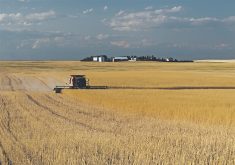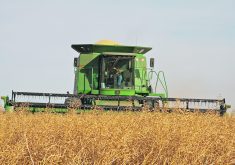WINNIPEG — The cold, wet weather that has downgraded the quality of some of Canada’s main staple crops isn’t having the same effect on mustard, according to two experts on the specialty crop.
Much of this year’s harvest is already over, but a significant number of acres remain in Saskatchewan and Alberta, said Walter Dyck of Olds Products in Lethbridge last week.
Drier weather has pushed into the Prairies recently, giving farmers hope they will be able to get more crops off before winter arrives.
Read Also

Pakistan reopens its doors to Canadian canola
Pakistan reopens its doors to Canadian canola after a three-year hiatus.
“The fields are saturated and there’s so much moisture in the air,” said Richard Marleau, chair of the Saskatchewan Mustard Development Commission.
“Seems to be we get one warm day and that’s enough to bring a shower overnight and then you’re back to square one.”
Mustard has deteriorated less than most other crops because it is an oilseed, but it is prone to a bit of shelling, he said.
Dyck said prices for the three types of mustard — oriental, yellow and brown — are almost 30 cents a pound.
Most of the 125,000 tonnes that Canada typically exports will go to the United States, he added.
U.S. growers planted a bit more mustard this year, but he doesn’t see it changing the export ratio.
Marleau said demand for Canadian mustard remains steady. Yields should be similar to last year.
“From what I’m hearing, yields might be in the 800 to 900 pounds an acre,” he said.
“Last year’s acreage on average was about 850 lb.”
Statistics Canada says prairie farmers planted 525,000 acres of mustard this year, up considerably from last year’s 345,000 acres.















